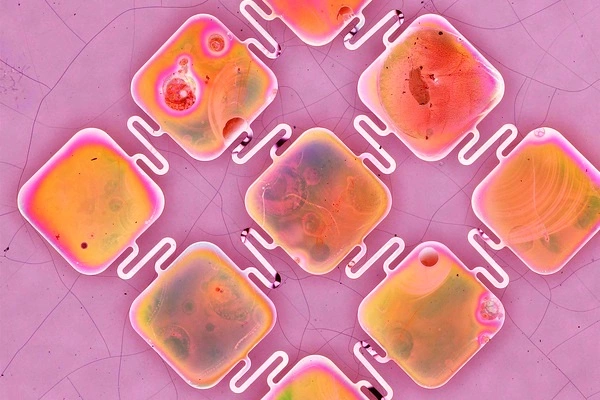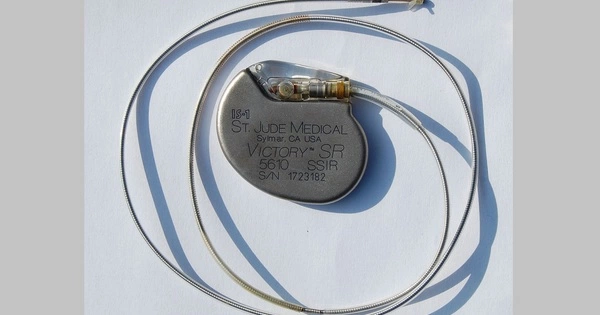Scientists have discovered that holes can improve technology, including medical devices. The article describes a completely novel method of producing a solar cell: etching holes in the top layer to make it porous.
Holes make sponges and English muffins more useful (and, in the case of the latter, delicious). They wouldn’t be able to bend into small crevices or sop up the perfect amount of jam and butter if they didn’t have holes.
According to a new study from the University of Chicago, holes can improve technology, including medical devices. The paper, published in Nature Materials, describes an entirely new method of producing a solar cell: by etching holes in the top layer to make it porous. The breakthrough could pave the way for a less invasive pacemaker or other medical devices. It could be used in conjunction with a small light source to reduce the size of the bulky batteries that are currently implanted with today’s pacemakers.
“We hope that this opens up many opportunities for further advancements in this field,” said Aleksander Prominski, the paper’s first author.
You could imagine implanting such devices in people who have chronic nerve degeneration in the wrists or hands, for example, in order to provide pain relief. This novel method of producing solar cells could be useful for sustainable energy or other non-medical applications
Aleksander Prominski
Light work
Prominski works in chemist Bozhi Tian’s lab at the University of Chicago, which specializes in connecting biological tissue and artificial materials, such as wires to modulate brain signals and surfaces for medical implants.
Making devices that can be powered by light is one of their research interests. This technology is most commonly associated with solar cells, but it can also use any light source, including artificial ones. Such devices are known as photoelectrochemical cells when they operate in the body and can be powered by a tiny optical fiber implanted in the body.
Solar cells typically require two layers, which can be achieved by combining silicon with another material, such as gold, or by incorporating different types of atoms into each silicon layer. However, UChicago researchers in the Tian lab discovered that by making one layer porous, like a sponge, they could make a solar cell out of pure silicon.
The resulting soft, flexible cell can be as small as five microns across, or the size of a single red blood cell. It can then be paired with an optical fiber that is as thin as a strand of human hair, significantly reducing the overall size of an implant and making it more body-friendly and less likely to cause side effects.
The porous cell has multiple advantages over the ways to manufacture traditional solar cells, streamlining the production process while maintaining the efficacy of the final product. “You can make them in a matter of minutes, and the process doesn’t require high temperatures or toxic gases,” said Prominski.

“When we measured them, we saw the photocurrent was really high — two orders of magnitude higher than our previous designs,” study co-author Jiuyun Shi added.
The surface layer of the material is then oxidized with oxygen plasma to improve its ability to stimulate heart or nerve cells. This step seems counterintuitive to chemists because silicon oxide is typically used as an insulator, and “you don’t want any insulating materials to impede the photoelectrochemical effect,” according to Tian. However, in this case, oxidization actually benefits the signal by making the silicon material hydrophilic (attracted to water), which increases the signal to biological tissues. “Finally, you can improve the device properties by adding a few-atom-thick layer of metal oxide,” said Pengju Li, another study co-author.
Because all of the components can be made biodegradable, the scientists envision the technology being used for short-term cardiac procedures. Instead of requiring a second surgery to remove the parts, they would degrade naturally after a few months. Because the devices could be placed in multiple areas of the heart to improve coverage, the innovative approach could be especially useful for a procedure called cardiac resynchronization therapy, which seeks to correct arrhythmias in which the right and left chambers of the heart do not beat in time.
Prominski is also excited about possible applications for nerve stimulation. “You could imagine implanting such devices in people who have chronic nerve degeneration in the wrists or hands, for example, in order to provide pain relief,” he said.
This novel method of producing solar cells could be useful for sustainable energy or other non-medical applications. Because these solar cells are designed to work best in a liquid environment, researchers at the University of Chicago believe they could be used in applications such as artificial leaves and solar fuels.
Tian’s team is collaborating with cardiac researchers at the University of Chicago Medicine to advance the technology for eventual human use. They are also working with the Polsky Center for Entrepreneurship and Innovation at the University of Chicago to commercialize the discovery.
















